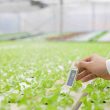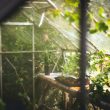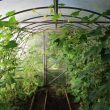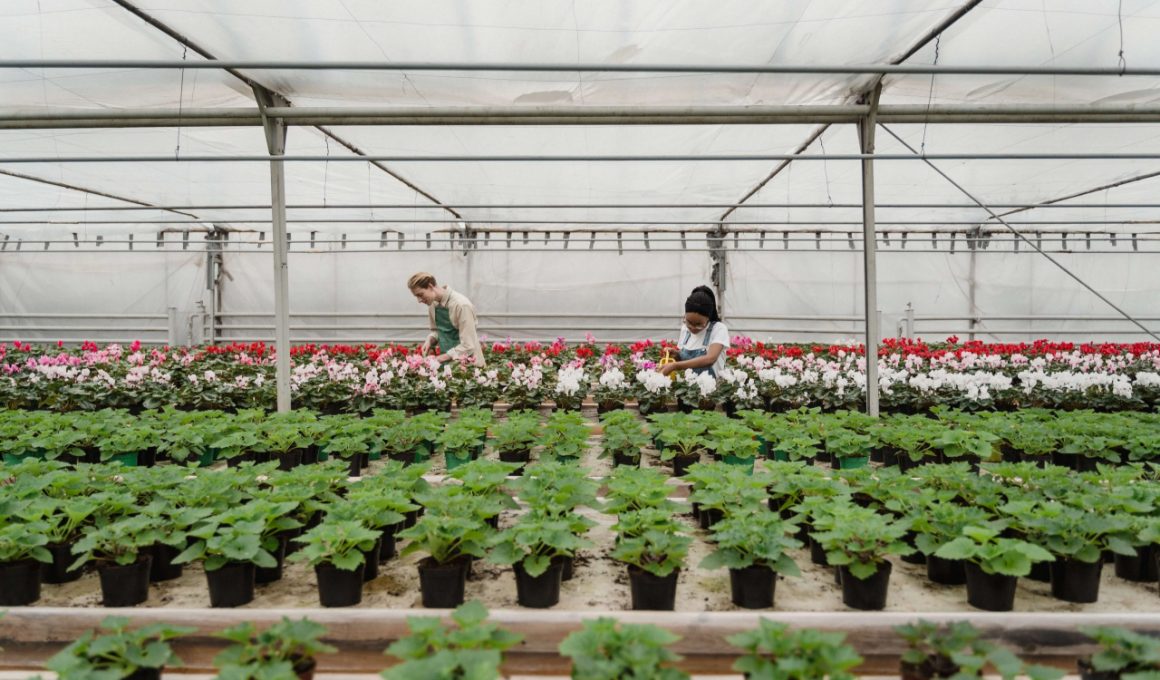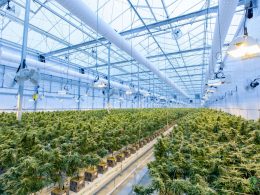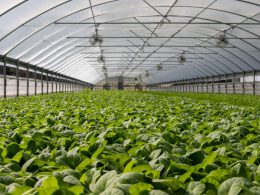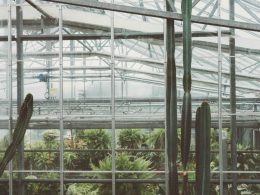Green House Adviser is reader-supported. When you buy through links on our site, we may earn an affiliate commission. Learn more
So, you’ve got your seedlings, your lights, and your stand and reflector shields. The only thing missing is your greenhouse shelving. Don’t worry; you’re in the right place. This article will teach you all about greenhouse shelving and what you need to know to get started!
What Is Greenhouse Shelving?
Increase the amount of space in your greenhouse with greenhouse shelving. You can maximize the area for plants by incorporating shelves. Shelves in a greenhouse can also offer more support for plants that climb.
Additionally, you can utilize greenhouse shelves to store items that you could also keep in a garden shed, such as additional pots, planters that aren’t being used, and gardening equipment. You can also store any tools, potting soil, or other goods you require quick access to.
Shelving for greenhouses is normally composed of metal or PVC and comes in a range of shapes and sizes. Occasionally, metal and wood are combined to create shelving.
Make sure to take into account the weight of the shelves and the kinds of plants that will be growing on them when selecting greenhouse shelving. Metal shelves could be the best choice for plants that are heavy. PVC shelf is a fantastic option for tiny plants because it is often more inexpensive and lightweight.
Let’s examine the various types of greenhouse shelves in more detail.
What Shelves Do You Need For Your Greenhouse?
Freestanding shelves, which are available in wood, metal, or plastic, are the most common style of greenhouse shelving. These shelves may be positioned anywhere in the greenhouse and are simple to put together. Some even prefer to make their own.
Suspended shelving, which hangs from the ceiling, is another kind of shelf that can be used in greenhouses. This type of shelving is perfect for storing bulkier objects like pots and soil. It won’t tumble over or break on you because it is built to support heavier weights.
Wall-mounted shelves are the last option, and they are ideal for small greenhouses or spaces with a modest footprint. Wood, metal, and plastic are just a few of the materials that can be used to make wall-mounted shelves.
It’s important to also consider your design and how to employ particular accessories effectively in addition to the sort of shelves you use. You should make sure your area has adequate air circulation and that the plants you are growing have enough space, light, and other necessities satisfied.
Design & Accessories
To maximize the available space, in addition to the shelves themselves, you can also use design and accessory ideas. A great way to maximize the extra space and effectively utilize what you have is to design your greenhouse shelves.
For instance, there might not be enough room inside a tiny greenhouse for freestanding shelf units. And you won’t be able to use wall-mounted shelves in a greenhouse without strong walls. So, listing all of those specifics is the first step. The next task is to begin planning how you will utilize the area.
To truly see where each component will go and how it fits into the overall design, some gardeners even prefer to sketch it out on paper first. To maximize your space, you might stack shelves with a smaller height difference between them. As the seeds start to grow, you can move them to areas with more space. This is so much simpler to do with a shelf unit that has movable shelves.
If your top shelf is extremely tall and you are short, you can use the extra room to store items that you don’t need to access frequently. A folding step stool can be kept in the greenhouse for use when you need to access the additional storage area. In fact, for this and other related reasons, it’s a good idea to keep a small ladder or step stool nearby.
In a very tiny greenhouse, there might not be many flat surfaces for working or much room for shelving. While adding shelving and even a small workstation to your greenhouse is helpful, you don’t want to overcrowd the area.
What to Grow in a Greenhouse
A greenhouse will allow you to take your outdoor gardening to the next level. It gives you some climate control over certain crops, allowing you to grow them consistently. Some of the most popular vegetables to grow in a greenhouse are peppers, chilis, cucumbers, tomatoes, etc.
Other plants can be grown in your greenhouse as well. It is suitable for overwintering non-hardy plants. If you have the space, you can also use it as a potting shed. This is where your staging and shelving really come into play.
What Features To Look For in Greenhouse Shelving
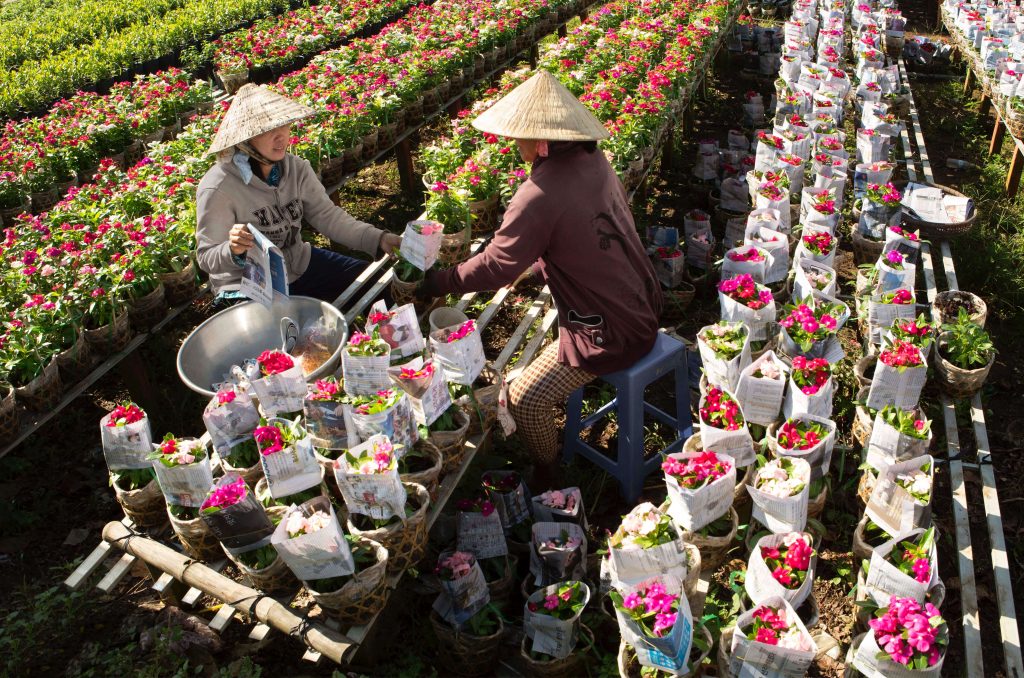
Greenhouse shelving can be used for anything from holding supplies to supporting plant growth. But what makes a greenhouse shelving system good or bad? There are so many factors it can be challenging to figure out what you need. Here are a few features you should look for before buying greenhouse shelving.
Material of shelves
Material is one of the main things to consider when looking for greenhouse shelving. The materials used for construction will determine how well it withstands the elements and how long it lasts. Types of shelves for a greenhouse are an essential component of the overall structure.
Most grade-A materials are usually constructed of heavy-duty aluminum or powder-coated steel. This makes them very sturdy and capable of enduring the test of time. Low-grade materials may be less expensive than higher-grade materials, but they will also have their limitations regarding their use in commercial situations.
Number of shelves
According to experts, one of the best features to look for when shopping for greenhouse shelving is how many shelves are available, so you know how much gardening space you’ll have. Greenhouse shelves are used to hold plants and other odds and ends, but how many shelves it has is a major determining factor in size. So, if you need more space for gardening, go for a higher number of shelves and vice versa.
Adjustable shelves
Adjustable shelves allow you to alter them based on your needs so you can get the best use of the space. They also make it easier for you to build the shelves to the exact height and position you need throughout the year to suit different needs depending on the season.
Moving shelves
Moving shelves are a feature to look for in greenhouse shelving. A moving shelf is an important superior advantage in the greenhouse industry because they allow the grower to move their plants around. The ability to move plants reduces wasted floor space and makes it easier to produce crops in tight spaces that wouldn’t be possible with non-moving shelves.
Easy drainage
One thing to remember when constructing or purchasing greenhouse shelving is drainage. Easy drainage is a must in greenhouse shelving. The way that the water drains is extremely important as water affects the goods and also creates damp spots on the floor. Greenhouse drainage products such as troughs, levelers, and beds are the most popular way to deal with waterlogging.
Durability
Durability is a feature to look for in the equipment you use. The winter season comes with heavy rains and storms. These storms can turn mild temperatures into freezing temps. Make sure that your greenhouse shelving can withstand the elements so your greenhouse crops don’t get damaged.
The Bottom Line
If you’ve just purchased or built a new greenhouse and you want to add some shelves for plant displays, this article can give you a head start with the information you need. And even though greenhouse shelving can be a considerable investment, we’re confident that it will prove to be worth it in the long run.
